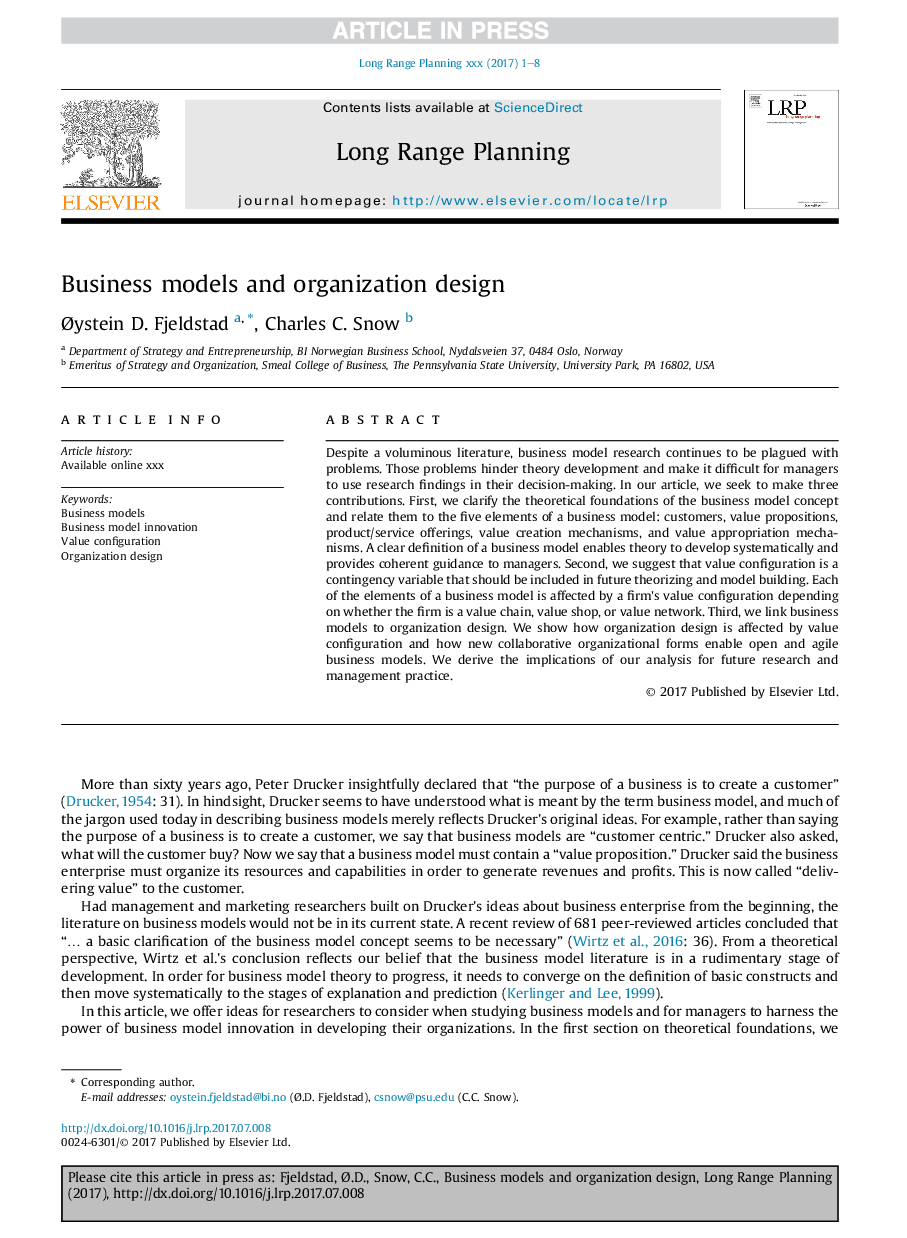| Article ID | Journal | Published Year | Pages | File Type |
|---|---|---|---|---|
| 7426873 | Long Range Planning | 2018 | 8 Pages |
Abstract
Despite a voluminous literature, business model research continues to be plagued with problems. Those problems hinder theory development and make it difficult for managers to use research findings in their decision-making. In our article, we seek to make three contributions. First, we clarify the theoretical foundations of the business model concept and relate them to the five elements of a business model: customers, value propositions, product/service offerings, value creation mechanisms, and value appropriation mechanisms. A clear definition of a business model enables theory to develop systematically and provides coherent guidance to managers. Second, we suggest that value configuration is a contingency variable that should be included in future theorizing and model building. Each of the elements of a business model is affected by a firm's value configuration depending on whether the firm is a value chain, value shop, or value network. Third, we link business models to organization design. We show how organization design is affected by value configuration and how new collaborative organizational forms enable open and agile business models. We derive the implications of our analysis for future research and management practice.
Related Topics
Social Sciences and Humanities
Business, Management and Accounting
Business and International Management
Authors
Ãystein D. Fjeldstad, Charles C. Snow,
